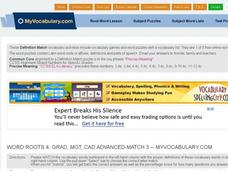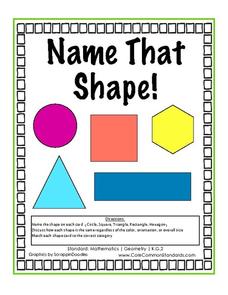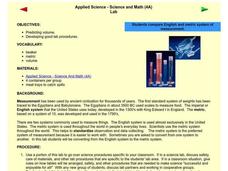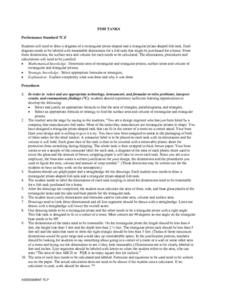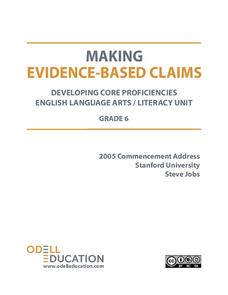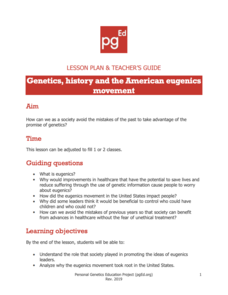Curated OER
Word Roots 4: GRAD, MOT, CAD Advanced Match 3
Access vocabulary knowledge with this online exercise. For this activity, learners match words to their definitions by choosing a letter from the drop-down menu provided for each word. This series of vocabulary exercises focuses in...
Curated OER
Word Roots 5: NAT, TRACT, SEQU Intermediate Level Synonym & Antonym
Decipher vocabulary using word roots. For this activity, learners fill in an antonym and synonym for six vocabulary words. They are provided with a word bank and can receive immediate online feedback. This could be used as an in-class...
Curated OER
Double Dip: Using Multi-Meaning Words
Double dip ice cream cones are a fourth grade favorite, and now they come in vocabulary and context flavor. Learners practice using double meaning words as they construct ice cream cones that contain two sentences showing how context can...
Curated OER
Expressing Ideas
Before a child can write in detail, he/she needs to be able to identify what the details are. To build an understanding of how to add or express details in describing an object, place, or person, learners match the detail cards to the...
Curated OER
Name That Shape
It can be so much fun to learn about new shapes! Kindergartners are shown a series of different shapes; each one is a different color, size, or orientation. They look at the shapes and discuss that no matter their color or size, a square...
Curated OER
Applied Science - Science and Math Lab
Although it was written to use in a science class, this measurement lesson is adaptable to Common Core standards in math for measurement and data. Youngsters are introduced to two types of measurement systems. They use both the English...
Curated OER
Tracing The Origins of Autism: A Spectrum of New Studies
Has the occurrence of autism increased over the years, or do the changes in diagnostic criteria account for the difference? High schoolers read an article about autism spectrum disorders and the related epidemiological studies that have...
Curated OER
A Yen for Maximum Residue Limits in Food
Future public health officials or agriculturists read an article and answer questions concerning the Japanese regulations for pesticide exposure. They compare the maximum residue limit for two, 4-D of Japan with other countries. This is...
Curated OER
Participant-Observer Guidelines Handout
Take your collaborative group work to a higher level with this informative handout about the nature, aims, and tasks of participant-observers. Teaching middle and high schoolers how to improve group process advances collaboration skills...
Curated OER
I Can Use a Worm to Count
Kindergarteners use worms, puppets or other props to practice counting to 100. First, they listen to a read aloud of Count Worms by Roger Hargeaves. A worm pattern is used to count to 100, with each segment of the worm representing a...
Curated OER
Fish Tanks: Volume and Surface Area
Given a very realistic challenge, your young geometers design residential fish tanks in rectangular and triangular prism shapes. They compute the volume of water each will hold. They also determine the size of plastic covers for each...
Math Drills
Missing Numbers in Equations (B)
Third and fourth graders use the divisors, dividends, and quotients to discover the missing numbers. They solve 32 problems in all, and fulfill the requirements of CCSS.Math.Content.3.OA.4
Curated OER
Lead and Mercury: Comparing Two Environmental Evils
High schoolers in chemistry or health courses look at the material safety data sheet (MSDS) and periodic table of elements to gather information about mercury and lead, two toxic materials that have been found in food products. They read...
Maths Blog
Decimal Fractions: Tenths
Reading tenths as phrases (such as three tenths, or five and nine tenths), forth graders write down both fractions and decimal equivalents. There are 10 problems on this page, making it a nifty pop quiz! Assess math learners grasp of...
Curated OER
Place Value Review
Review various aspects related to place value with this easy-to-follow presentation. Learners can review the base ten system, see representations, and read descriptions of ones, tens, hundreds, and thousands, and numbers in expanded...
Growing Minds
Lettuce Exploration
Kathy Henderson’s book And the Good Brown Earth introduces the class to how a vegetables grows and changes over time. They use different types of lettuce to do a close study of this quick-growing vegetable. Learners consider the look,...
Yummy Math
Twinkies
Brian was devastated when Hostess® filed for bankruptcy, and he was also fearful that his favorite snack treat would be lost forever. The snack food was in danger of being lost, your class won't be lost when using Twinkies® as the...
Yummy Math
Happy 14th B’ak’tun, the start of the next Great Mayan cycle
The ancient Mayans had a complex calendar and number system with a rich history. In fact, the date 12/21/2012 was the center of much controversy as to whether or not it was the end of time. It wasn't the end of time, but it was the end...
Curated OER
Classroom Supplies
Challenge young mathematicians to buy classroom supplies by staying within the means of a $1,000 budget. The mathematical activity provides learners with the opportunity to decide what items from the supply list would benefit a class of...
Illustrative Mathematics
Same Base and Height, Variation 1
Four triangles are depicted for learners to construct on a geoboard. They compute and compare the areas, and so meet one of the sixth grade Common Core standards for geometry. Note that the set of triangles does not include a right...
Illustrative Mathematics
Graphs of Compositions
It might help when working with this resource to give an example of a composition function. For example, the amount of time it takes to get to work depends on the amount of traffic; the amount traffic depends on the time of day....
Curated OER
Where the Red Fern Grows Chapter 4-6 Worksheet
Looking for a quick review sheet for several chapters of Wilson Rawls' novel Where the Red Fern Grows? Check out this one, which is made up of a straightforward list of questions that ask learners to remember the plot and express their...
Odell Education
Making Evidence-Based Claims: Grade 6
In order to make evidence-based claims, one must be able to draw explicit information from text. From here, learners take that information, analyze the text to develop a deeper understanding, and connect with the information in order to...
Personal Genetics Education Project
Genetics, history and the American Eugenics Movement
A poignant 20-slide show introduces high schoolers to the amazing accomplishments of genomics and raises the question of eugenics. This lesson is only for mature audiences, as it deals with rape and other sensitive topics, but it is...
Other popular searches
- Common Core Language Arts
- Common Core Math
- Common Core Reading
- Common Core Standards
- Common Core Social Studies
- Common Core Writing
- Common Core Math Lessons
- Science Common Core
- Common Core English
- Common Core Ela
- Common Core Lessons


